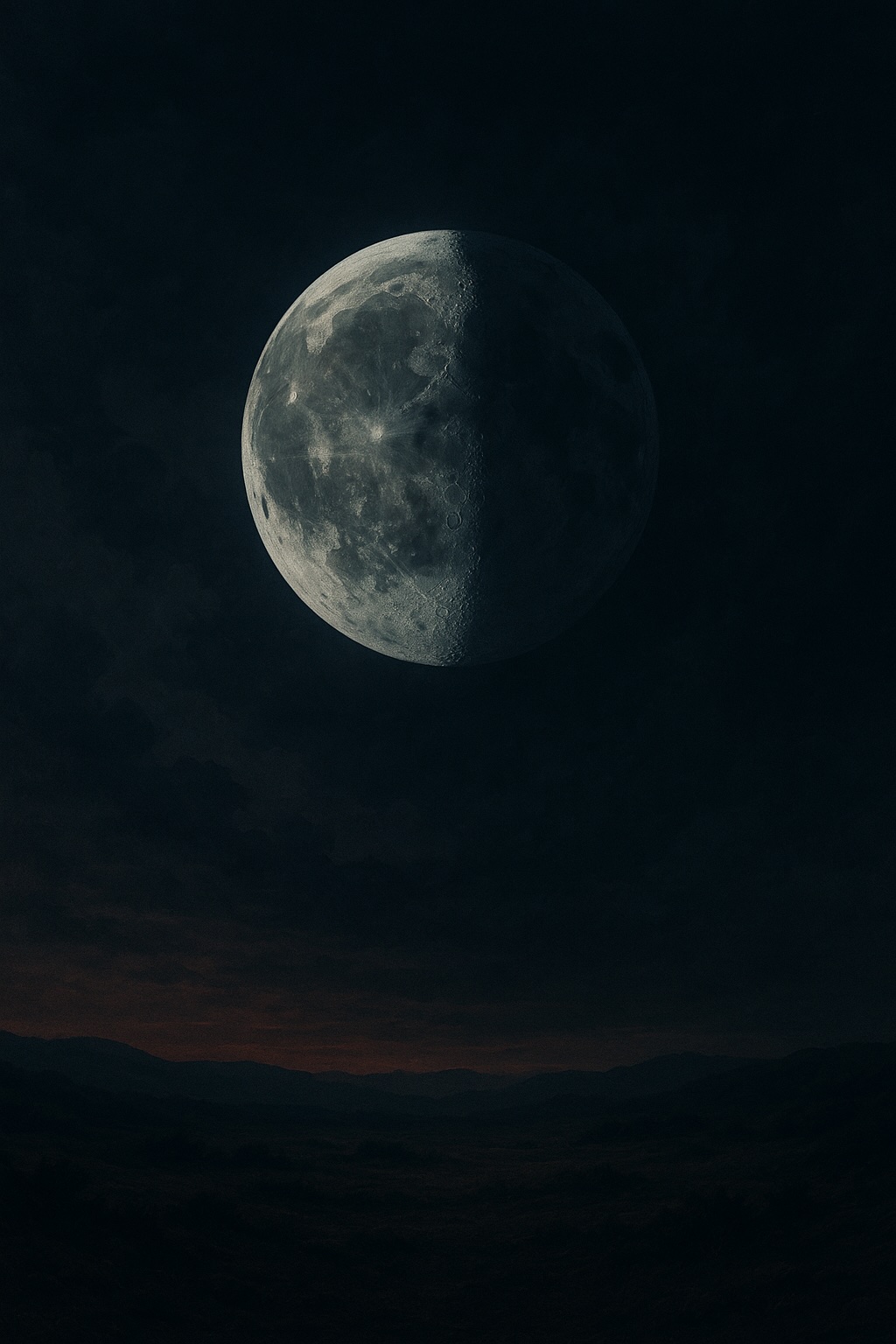July 15, 2025

⁂ The Moon That Faces Both Ways: Sulva and the Fractured Human Spirit
In That Hideous Strength, Lewis gives us not just a dystopia but a metaphysical map. And one of its most disturbing landmarks is Sulva—the Moon.
“Sulva is she whom mortals call the Moon. She walks in the lowest sphere... Half of her orb is turned towards us and shares our curse. Her other half looks to Deep Heaven…”
The Moon becomes more than a satellite. She is a threshold, a mirror, and a wound. Half her face toward the brokenness of Earth, half toward the unreachable purity of the spheres above. This is not just spatial language. It’s existential.
Sulva represents a divided condition—the soul that knows beauty exists but cannot reach it. A being that reflects light but produces none. A place of cold brightness, dislocated fertility, and sterile longing.
And it is from this symbol that Lewis draws one of the most terrifying images in the book.
“There when a young man takes a maiden in marriage, they do not lie together, but each lies with a cunningly fashioned image of the other, made to move and to be warm by devilish arts…”
This is not merely science fiction grotesquerie. It is psychological diagnosis, dressed in myth. These are people who prefer simulation to reality, whose desires have become so refined—so dainty—that actual intimacy repulses them. They do not want to be touched by the real. They want pleasure without presence, control without exposure.
It’s an image of extreme self-protection, a rejection of vulnerability in favor of polished fantasy. The image replaces the body. The symbol replaces the soul. They lie with projections because the real other is too unpredictable, too alive, too threatening to their curated interior worlds.
“Their real children they fabricate by vile arts in a secret place.”
Even procreation is taken underground. Removed from embrace. Sterilized. Hidden. This secret fabrication of life is a perversion of generation. It is creation without surrender. Power without pain. And in Lewis’s world, it signals a cosmic treason: not just rebellion against moral law, but rebellion against the givenness of reality itself.
⁂ The Shadow of NICE
This is exactly what the NICE is attempting on Earth. Their lust is not merely sexual—it is ontological. They long to reframe the human story according to abstract desire, not natural law. Their cold marriages are seen in their bureaucratic alliances. Their fabricated children echo in their attempts to manufacture a post-human future.
They call it science. They call it progress. But in Ransom’s account, it is Sulva’s sickness seeping downward.
⁂ The Implications for the Human Soul
To understand Sulva is to recognize a danger already at work in the soul: the part that turns away from love in order to remain untouched. The part that would rather dream than dwell. The part that would lie beside a puppet than risk the mutual trembling of intimacy.
Sulva is not just a planet. She is a condition.
And her divided face—the one turned toward Deep Heaven and the one turned toward cursed Earth—is the perfect emblem of the divided self.
To live facing Deep Heaven is to open the self to longing, vulnerability, even loss. But to live turned only toward Earth’s curse is to embrace coldness masquerading as refinement. It is to fall in love with images, to sterilize the womb, to hide our real generativity underground.
And the tragedy of Sulva is this: she is so close to joy, and cannot cross the threshold.
Lewis is not moralizing here. He is unveiling. He is showing what becomes of a people who no longer want the real, and what spiritual sclerosis sets in when presence is traded for power.
Sulva is always watching. She reflects light, but gives no warmth.
She walks in the lowest sphere.
And she reminds us what we risk becoming, if we no longer want to touch or be touched by the world.